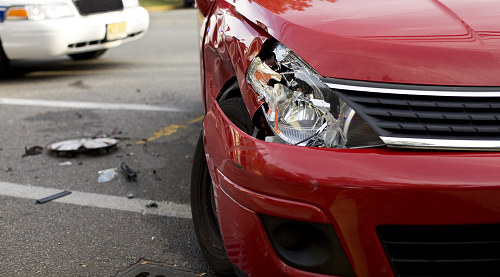TUESDAY, JUNE 22, 2021
There are a lot of incidents that can cause your car insurance rates to go up, from accidents to a drop in your credit score. Accidents, however, are often the scariest and most uncertain incidents, especially when you aren’t sure what you will expect to pay afterward.
On top of making sure everyone is okay, getting medical treatment and filing an insurance claim, your rates are also likely to go up. It’s an added frustration on top of an already stressful situation, but how much does your insurance actually go up after a wreck?
On average, premiums rise by 44.1% after one accident. This varies per state, however. In California, you’re looking at a possible 60.3% increase while Kentucky only raises your rates by 30.6%. Other factors that influence the increase of your car insurance rates are:
-
Amount of previous claims
-
Circumstance of the accident
-
Insurance company
-
Amount of damage done in the accident
Kansas has a 22% increase for one accident, which is about $313 more a year from the average insurance rate of $1,412.
Some insurance companies have accident forgiveness and offer cheaper rates for drivers with a bad driving record. The more previous violations and accidents on your record, the higher your car insurance may be. The average increase for an accident is:
-
1 at-fault accident: 29.66% increase
-
2 at-fault accidents: 110% increase
-
1 comprehensive claim: 3% increase
-
2 comprehensive claims: 8% increase
How Long Does an Accident Affect Your Car Insurance?
This depends on the state and circumstances of the accident. On average, a car accident will stay on your insurance for 3 years. If an accident occurs due to a DUI, however, you may have the DUI on your record for up to 10 years.
Does Your Car Insurance Go Up After an Accident in a No-Fault State?
If you get into a wreck, it’s usually safe to assume that your insurance rates will go up. Kansas is a no-fault state, meaning that each driver in an accident must file a personal injury protection claim to pay for injuries to themselves and their passengers. Filing a car insurance claim will generally raise your rates. Even in at-fault states, insurance rates may rise for drivers who are not considered at-fault for the accident. This is because filing a claim, even if only for damages done to the vehicle, costs the insurance company money in compensation. After one or more claims, you are considered more likely to file another claim. This is also where it’s important to consider what insurance agency to insure with. Some companies offer more forgiveness for at-fault and not-at-fault accidents. If you’re a high-risk driver, you should consider insuring with a company that specializes in insuring nonstandard drivers.
What is a High-Risk Driver?
A high-risk driver is a driver who is considered risky to insure by insurance companies. Your risk is determined by the likelihood that you will file a claim which the insurance company will have to pay. High risk drivers typically have:
Some influences, such as your age, are uncontrollable. Others, however, you can attempt to lower your insurance rates by lowering your risk in other areas.
Other Affects on Car Insurance Rates
More Drivers and More Auto Accidents
More drivers on the road can cause a higher likelihood of accidents. This is in part due to the population in your area. If the population in your area rises, especially concerning drivers, you may pay more for auto insurance.
The number of accidents has also risen because of an increase in unsafe driving practices.
This means that even if you drive defensively and have a clean record, drivers around you can cause your rates to go up.
Claim Severity
The number of accidents isn’t the only factor affecting auto insurance claims. The size of the average insurance claim—also known as claim severity—has increased as well.
Insurers calculate your premiums based on how much they may have to pay after a claim. With more expensive accidents, insurance providers are paying out heftier compensation—which means a raise in prices to offset the risk.
Uninsured Motorists
Auto insurance is required in most states as a way to cover your own liability and provide compensation to others in the event that you’re responsible for an accident. Despite this, approximately 13% of drivers drive uninsured.
If you live in a state or area that is particularly high in its number of uninsured drivers, you could pay more for auto insurance. If you have an accident, be sure to speak with your insurance agent about your policy and your options.
No Comments
Post a Comment |
|
Required
|
|
Required (Not Displayed)
|
|
Required
|
All comments are moderated and stripped of HTML.
|
|
|
|
|
|
NOTICE: This blog and website are made available by the publisher for educational and informational purposes only.
It is not be used as a substitute for competent insurance, legal, or tax advice from a licensed professional
in your state. By using this blog site you understand that there is no broker client relationship between
you and the blog and website publisher.
|
Blog Archive
2025
2024
2023
2022
2021
2020
2019
2018
|